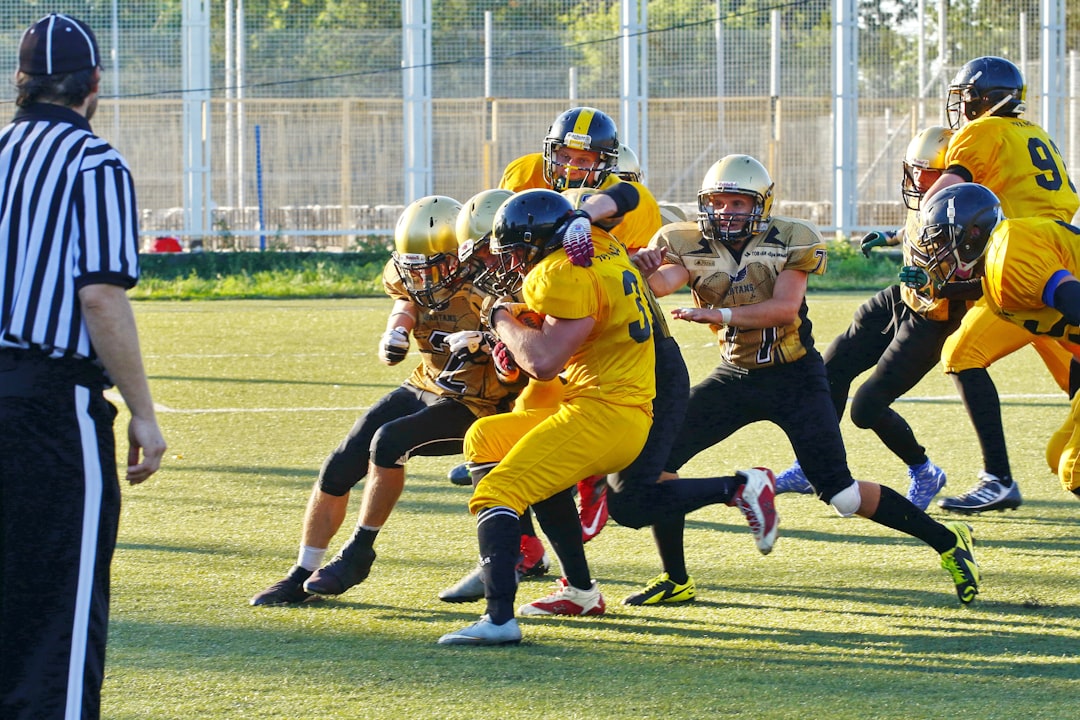Football is a fun and exciting game. But if you’re new to it, the lingo can seem like a whole new language. One of the most important parts of football is something called the route tree. This is a basic tool used by wide receivers, quarterbacks, and coaches to plan passing plays. Don’t worry. We’re going to break it down so even a total beginner can understand it.
First, let’s talk about what a “route” is.
What Is a Route?
A route is the path that a wide receiver runs after the play starts. It’s how receivers try to get open for a pass from the quarterback. There are many different routes, and each one tells the receiver exactly where to go and how to get there.
Think of each route as a pattern you run. Kind of like walking a dog through a city and choosing different streets to turn on. Each receiver on the field will run a planned route during a play.
What Is the Route Tree?
The route tree is a way to group and number all the basic routes. It’s like a menu of options for receivers. Coaches and players use the numbers to call plays quick and easy. There are 9 main routes on the tree, numbered from 0 to 9.

Imagine a tree with branches going in different directions. That’s what the route tree looks like when drawn on paper. The base of the tree is where the receiver starts. Each branch represents a different way the receiver can run.
The 9 Basic Routes on the Tree
- 0 – Quick Out: Run just a few yards forward, then make a sharp turn toward the sideline.
- 1 – Slant: Take a step or two, then angle across the field quickly.
- 2 – Out: Run 5-10 yards downfield, then cut directly toward the sideline.
- 3 – Comeback: Go about 12 yards, then cut back toward the quarterback at an angle.
- 4 – Curl: Sprint about 12 yards upfield, stop suddenly, and turn back to face the QB.
- 5 – Out-and-Up: First run an Out route, then suddenly turn upfield and keep running straight.
- 6 – Dig (In): Run 10-15 yards, then turn sharply in toward the middle of the field.
- 7 – Corner: Run downfield, then angle toward the back corner of the field.
- 8 – Post: Run downfield, then cut toward the center of the field.
- 9 – Go (Fly): Just run straight down the field as fast as you can! No cuts, just go.
Pretty easy, right? Think of the numbers as short codes. When a quarterback says, “Run a 3,” the receiver knows to run the Comeback route.
Why Is the Route Tree Important?
The tree is like a football language. It lets players talk fast and still understand each other. If everyone knows the route numbers, the QB and receivers can talk about plays in just a couple of words.
For example, say a play is called “Trips Right 989.” That might sound like gibberish, but it’s actually clear to the team. The “989” part tells each receiver which route to run based on their position.
Knowing the route tree also helps defenses plan. If they recognize the route, they can try to stop it before it works.
How Routes Work Together
In real games, each receiver doesn’t just run random routes. They work together as a team. One route might be designed to distract a defender while another route is the real target.
This teamwork creates space. That way, one receiver ends up open—and that’s where the QB throws the ball.

Good route combinations are like well-practiced dance moves. Smooth, quick, and timed just right.
What’s It Like to Run a Route?
Running a route isn’t just jogging in a direction. It takes skill. Here’s what receivers focus on:
- Speed: Get off the line fast.
- Crisp Cuts: Change directions sharply and quickly.
- Timing: Arrive at the right spot when the QB is ready to throw.
- Fakes: Trick defenders with your body before making your real move.
The better a receiver is at routes, the more likely they get the ball—and maybe score a touchdown!
Running Smart Routes
Each situation in football calls for a different kind of route. Here’s how players choose:
- Short yardage: Use quick routes like Slants and Outs.
- Needing a first down: Routes like Digs and Curls get just enough yards.
- Big plays: Use deep routes like Posts and Goes to gain more ground fast.
Quarterbacks read the defense and pick the best target. That’s why routes need to be sharp and on time. If the receiver’s a step late or in the wrong spot, it could mean an incomplete pass—or worse, an interception!
How To Learn the Route Tree
Want to learn the tree yourself? Here are some tips:
- Watch videos: See real players run routes in slow motion.
- Draw it out: Sketch the route tree on paper until it’s memorized.
- Practice one at a time: Focus on one route each day.
- Use flashcards: Put the number on one side, and the route name and picture on the other.
Over time, you’ll know each route like the back of your hand.
Fun Fact: Routes Have Nicknames
Some routes have cool names. For example:
- The Fly route is also called the Streak.
- The Corner and Post are sometimes known as flag routes and skinny posts.
- A Curl route is often called a hook.
These nicknames make football sound even more fun—and sometimes more confusing. But now you know!
Bring It All Together
Let’s say you’re watching a game, and the announcer says, “That’s a perfect Post route!” Now you know that’s a Route 8, and the receiver ran toward the goal post at an angle. Pretty cool, right?
The route tree is a must-learn for anyone who wants to understand football. It helps players communicate, it shapes the entire offense, and it’s fun to memorize.
So next time you watch football, keep an eye on the receivers. Watch how they move. Try to name the route they’re running. You’ll enjoy the game even more—and impress your friends with your football smarts!
Remember, every amazing catch starts with a great route. Happy watching!
